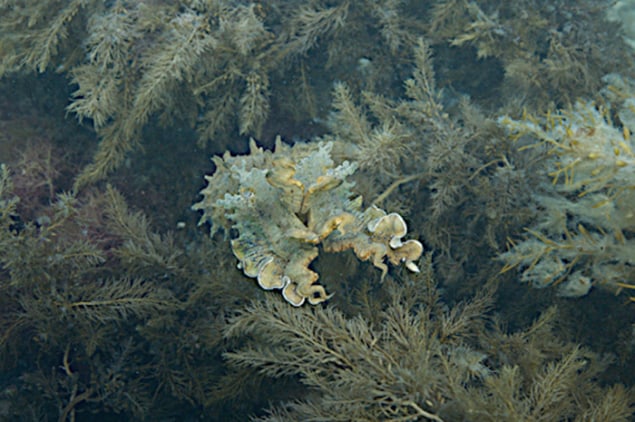
Researchers in the US have been inspired by octopuses and cuttlefish to create a new kind of shape-shifting artificial “skin”. Based at Cornell University and the Marine Biological Laboratory in Woods Hole, Massachusetts, the scientists have shown that the artificial skin can rapidly change from flat sheets to pre-programmed 3D shapes that imitate stones, plants and other natural objects.
Octopuses and cuttlefish camouflage themselves by transforming their skin from smooth to complexly textured, as well as changing colour. The purpose is primarily to hide the outline of the body as seen from different perspectives, explains Roger Hanlon, of the Marine Biological Laboratory. “Moreover, the 3D texture tends to resemble the surrounding 3D texture of algae, corals, etc,” he says. “It is a general resemblance to 3D surrounds, not meant to specifically mimic one sort of plant, animal or inert background.”
Muscular hydrostats
The creatures do this using sets of independently controlled 3D features (called “papillae”) in their skin. The shapes of these papillae can transform from flat to protruding because of erector muscle fibres that are stacked horizontally in concentric circles around each papilla’s central axis. When the fibres contract, they create a force towards the centre of the papilla that pressurizes the surrounding soft tissue and causes it to stretch, in tension, away from the skin. This is an example of a muscular hydrostat – movable biological structures based around tightly packed, incompressible muscle with no skeletal support. Other examples include elephant trunks, octopus arms, and our own tongues.
In their simplest form, when extended, the papillae would be conical in shape. But different arrangements of muscles, and papillae consisting of multiple muscular hydrostats working together, create more complex shapes. By changing them from flat to fully extended, or any shape in between, octopuses and cuttlefish can rapidly transform their skin through a cascade of 3D forms.
Fibre-mesh rings
Inspired by the structure of the papillae, the researchers created a silicon elastomer skin embedded with rings of fibre mesh. When this skin is inflated, the silicone stretches, while the fibre mesh takes on the role of muscle fibres, providing a force towards the central axis and controlling the 3D shape. By changing the shape and positioning of the fibre-mesh rings, the team was able to produce a range of complex 3D structures, including a bed of non-symmetrical and hierarchical stones, and a succulent plant, with leaves arranged in a spiral around a central point.
Cornell team member James Pikul told Physics World that the shapes they produced function in the same way as the papillae, as “they do not change their fully inflated shape, but can be expressed anywhere between fully flat and fully actuated”. “By combining both the degree of inflation and which synthetic shape we actuate, we can change our texture. This ability allows cephalopods to use the same papillae to camouflage into many different environments. It would also allow us to control the specific surface area, for future technologies, or shadowing, for camouflaging in a sunny environment.”
Robots and computers
“Soft, stretchable materials are really great for human–robot or human–computer interaction,” adds Pikul. “So making controllers or displays that can change shape, or disappear into a surface, could be exciting applications.”
Pikul also points out that the surfaces of materials play an important role in many technologies – such as batteries, and heat and cooling technologies – and that there could be “a lot of opportunities in coupling these geometric transformations with technologies where surface structure and chemistry are important”.
The artificial skin is described in Science.



